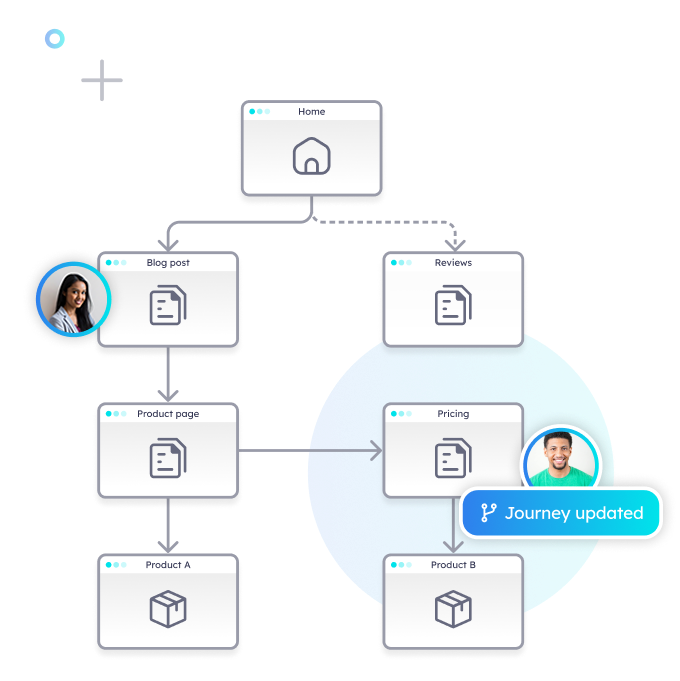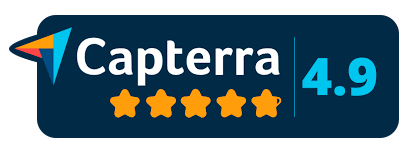The world’s most innovative brands—from global banks to retail giants—are all converging on the same realization: if you can’t map your customers’ journeys end to end, you can’t compete.
In 2025, customer journey mapping and buying journey analysis have become the linchpin for survival in an economy where acquisition costs have soared to five times the cost of retaining a customer, and where 60% of consumers say they will switch brands after a single poor interaction.
Yet journey mapping itself has evolved beyond static diagrams. The most effective customer experience (CX) leaders are combining real-time analytics, AI-driven behavior prediction, and personalization engines to create living, responsive journeys that adapt to every user’s context and intent.
This is precisely why 62% of CX leaders surveyed at the Customer Experience Strategy Forum plan to increase their budgets for customer journey mapping in 2025—a higher spend priority than automation, chatbots, or even content generation.
In this article, we’ll explore:
- What makes customer journey mapping so mission-critical in 2025
- How analytics and personalization are converging
- The measurable ROI of well-orchestrated journeys
- What leading brands are doing differently
- Why Pathmonk is the #1 platform to operationalize customer journey mapping at scale
Let’s break it down.
Table of Contents
The rising urgency: why customer journey mapping is dominating CX investment
The last few years have exposed a hard truth: most organizations think they understand their customers, but they don’t.
According to the Customer Experience Strategy Forum September 2025 report, a staggering 26% of CX leaders admit they don’t know their customers’ biggest frustrations, with the most common issues including:
- Long wait times (average phone waits are now over 2 minutes)
- Poor personalization
- Fragmented handoffs across channels
This “insight gap” is costly. Every misaligned interaction compounds churn risk. In fact, McKinsey research cited in the report shows well-designed journeys can boost cross-sell by 25% and grow share-of-wallet by 5–10%, yet most companies are still flying blind.
And while the pressure to acquire new customers remains, the economics have shifted. Retention is now the top strategic priority for 41% of CX leaders, as customer acquisition costs (CAC) have outpaced marketing budget growth by an order of magnitude.
In 2025, the brands who survive will be those who can see every touchpoint, identify friction, and optimize journeys in real time, not those who only focus on acquisition funnels.
Free template: customer journey touchpoints
Map your marketing touchpoints and understand your users' journey to conversion across all stages

From static maps to intelligent orchestration: the evolution of customer journey mapping
Historically, journey mapping was a static exercise. Teams would create a diagram of key stages—awareness, consideration, purchase, loyalty—and workshop pain points on a whiteboard.
While useful as a starting point, static maps fail to account for two critical realities:
- Journeys are no longer linear. Customers jump between devices and channels dozens of times before converting.
- Behavior and intent shift dynamically. A user browsing casually in the morning may be ready to purchase by evening.
Today, customer journey mapping is an active, AI-powered process, combining:
- Real-time analytics to capture granular behavioral data (clicks, hesitations, repeat visits)
- Intent prediction models to anticipate next-best actions
- Personalization engines that trigger the right content, offers, or micro-experiences
The Forum report underscores this shift:
- 67% of practitioners already use journey orchestration tools
- 40% report direct profit increases after implementation
- 45% see loyalty improvements
This is why journey mapping is now the number 1 investment priority, and why it should be yours too.
Why real-time analytics and personalization are converging
Another insight from the 2025 research:
35% of CX leaders rank app-level analytics and behavioral CX tools as their top technology priority.
Why? Because seeing what users do—and why they do it—is no longer optional. Brands need:
- Microscope-level visibility into digital journeys
- Predictive models that anticipate conversion readiness
- Personalization capabilities that deploy adaptive experiences
Here’s how these pillars work together:
- Analytics: Capturing behavior in real time. Modern analytics platforms ingest every action, from micro-interactions (like hover states) to page depth and time-on-screen. Pathmonk, for instance, auto-captures hundreds of behavioral signals without manual tagging.
- Intent prediction: Determining readiness. With AI models trained on thousands of journeys, you can identify when a visitor is in discovery mode versus when they’re primed to convert. This allows you to adapt your site experience on the fly.
- Personalization: Orchestrating experiences. The final piece is personalization—delivering the right message or offer at the right moment. Pathmonk’s personalization engine can automatically deploy tailored overlays, embedded experiences, or calls to action without developer support.
If a repeat visitor hesitates on your pricing page, analytics surfaces the friction, intent prediction calculates conversion probability, and personalization offers a testimonial or incentive to reduce doubt—all in a single flow.
The measurable ROI of mapping and optimizing journeys
Skeptical that journey mapping alone can justify the investment? Let’s look at the data.
According to the Forum report and McKinsey’s supporting research:
- Well-designed journeys can reduce churn by up to 15%
- Cross-sell can increase by up to 25%
- Share-of-wallet can expand by 5–10%
- AI-powered support slashes first-response times by 74%
Meanwhile, brands with no journey orchestration in place see:
- Fragmented experiences
- Lower repeat purchase rates
- Higher support costs
In fact, more than half of consumers will abandon a brand after one bad experience. When your journeys are blind spots, every touchpoint becomes a risk.
Translate all your data into clear insights
Discover how to future-proof your marketing data strategy with AI-powered analytics.

How leading brands are re-engineering journeys in 2025
Here are some of the practical ways top CX leaders are reimagining journeys this year:
- App analytics driving personalization
Brands like DHL and Sainsbury’s (both named in the report) are investing heavily in app-level analytics. They monitor:
- Tap patterns
- Scroll depth
- Abandonment rates
- Repeat usage trends
They feed this data directly into personalization engines to adapt journeys in real time.
- Automation and human touch in balance
Chatbots handle repetitive queries, freeing up skilled teams to focus on high-emotion interactions—especially when journeys hit friction points.
- Real-time orchestration platforms
The majority of leading firms (67%) now run journey orchestration tools that automatically deploy next-best actions.
- Dynamic micro-experiences
Instead of static banners or popups, they leverage AI-triggered micro-experiences:
- Personalized video recommendations
- Dynamic CTAs
- Contextual overlays
If you want to be in this league, you need tooling that unifies analytics, prediction, and personalization in a single platform.
Why Pathmonk is the #1 platform for customer journey mapping in 2025
While many vendors offer fragments of the journey mapping puzzle—an analytics dashboard here, a personalization widget there—Pathmonk is the only solution purpose-built to unify all three pillars: advanced analytics, AI-powered intent prediction, and dynamic personalization. In a single, integrated platform, Pathmonk helps you understand, predict, and influence every customer journey in real time.
This is why our customers love Pathmonk:
1. Behavioral analytics without the complexity
Most analytics platforms require extensive tagging, developer resources, and endless configuration before you can gather usable insights from your customer journey. Pathmonk flips this paradigm. With out-of-the-box behavioral tracking, Pathmonk automatically captures every meaningful interaction across your website:
- Scroll depth and velocity
- Cursor hesitations and repeated hovers
- Entry and exit paths
- Time spent per content block
- Device and channel-specific behaviors
These granular signals are stitched together in real time to produce high-resolution journey maps. Unlike static funnel views, Pathmonk’s analytics show precisely where engagement surges, friction builds, or attention drifts—so you can act decisively.
2. Intent prediction with proprietary AI models
While many tools claim to “score leads,” Pathmonk leverages purpose-built machine learning algorithms trained on millions of journeys to calculate each visitor’s propensity to convert. These predictive models analyze a blend of micro-behaviors and context signals—like repeat visits, content consumption sequences, and dwell times—to classify intent dynamically.
Instead of guessing who is ready to buy, you get objective readiness scores and journey phase labels, which unlock more precise segmentation and smarter targeting. For example, if a user shows high intent signals on a pricing page, Pathmonk can escalate them to a direct call-to-action, while lower-intent browsers are nurtured with credibility-building content.
3. AI-powered personalization engine
At the heart of Pathmonk is an adaptive personalization engine that lets you create contextual micro-experiences—without requiring a single line of code. Unlike legacy personalization tools that depend on manual rule-building, Pathmonk’s engine automatically matches predicted intent with the right interaction layer.
Increase +180%
leads
demos
sales
bookings
from your website with AI
Get more conversions from your existing website traffic delivering personalized experiences.

Use cases include:
- Displaying testimonials or trust badges to users showing uncertainty
- Deploying time-limited incentives to nudge ready-to-buy visitors
- Offering tailored content recommendations based on past engagement
- Presenting qualification surveys or interactive experiences to identify high-value prospects
These micro-experiences are triggered at the optimal moment in the journey and tailored for each channel or device. All experiences are tested, measured, and refined automatically, so you continually improve performance over time.
4. Cookieless by design
With privacy regulations tightening globally, most brands are grappling with how to maintain personalization without compromising compliance. Pathmonk is built from the ground up to operate without third-party cookies, leveraging advanced cookieless tracking that respects user consent and aligns with GDPR, CCPA, and other frameworks.
This approach not only protects your brand legally but also reassures privacy-conscious users who expect transparency and control over their data.
5. Built for speed and simplicity
While enterprise journey orchestration platforms can take 6–12 months to implement and require armies of consultants, Pathmonk deploys in a matter of days. From plug-and-play behavioral tracking to pre-configured personalization templates, everything is designed to get you live fast.
Once activated, Pathmonk surfaces actionable insights in your dashboard immediately, so you don’t wait months to see results. Many brands report measurable improvements in conversion rates and engagement within the first 30 days.
6. Designed to grow with you
Whether you’re an emerging SaaS startup or a multinational retailer, Pathmonk scales seamlessly as your business evolves. Features like advanced segmenting, multi-site tracking, and cross-channel experience delivery allow you to expand complexity without overhauling your stack.
As your team’s sophistication grows, you can layer in additional capabilities such as:
- A/B and multivariate testing across personalization experiences
- Segment-specific reporting for precise performance analysis
- Custom API integrations to enrich data flows between your CRM, marketing automation, and analytics tools
7. Proven impact on revenue and retention
Pathmonk is not just a toolkit—it’s a revenue engine. Customers routinely see:
- Average 50–60% increases in qualified conversions
Higher average order values driven by intent-aligned offers - Reduced churn as journeys adapt to each customer’s lifecycle
- Shortened sales cycles thanks to real-time readiness scoring
These results are backed by clear attribution, so you can demonstrate ROI to stakeholders with confidence.
Grow your SaaS pipeline with personalized interactions
Leverage AI-powered personalization to increase qualified leads, demos booked, and purchases.

FAQs on customer journey mapping
1. What are the most common mistakes companies make when implementing customer journey mapping?
One of the most frequent mistakes organizations make is treating customer journey mapping as a static deliverable rather than an ongoing strategic capability. Many teams spend weeks or even months gathering insights and crafting a polished diagram, only to file it away without operational follow-through. When journey maps become shelfware, they lose their transformative potential. The real value comes from continuous iteration—integrating the insights back into content workflows, product development, customer support training, and marketing campaigns. Companies that treat journey mapping as a one-time project often miss emerging friction points as customer behaviors evolve, especially in fast-changing digital environments.
Another pitfall is over-reliance on anecdotal personas or limited survey data. While interviews and focus groups can reveal valuable perceptions, they rarely capture the nuanced behavior patterns that analytics can uncover. Without validating assumptions with quantitative behavioral data—like click paths, session replays, and purchase patterns—teams risk designing experiences that don’t reflect reality. A robust journey mapping approach combines qualitative insights with real-time analytics to build a holistic view. This integration helps avoid confirmation bias and ensures that investments in personalization or process improvements are grounded in evidence, not guesswork.
2. How do customer journey maps support omnichannel strategies?
Customer journey mapping is indispensable for any brand serious about delivering a cohesive omnichannel experience. Modern consumers don’t think in terms of channels, they expect to start an interaction on a mobile device, continue on a laptop, and complete it in-store or over the phone without repeating themselves.
Journey maps provide the connective tissue that visualizes these transitions, making it clear where hand-offs occur and where context often gets lost. By charting every touchpoint in a single unified framework, companies can pinpoint when and why customers are forced to reintroduce themselves or encounter inconsistent messaging, which are among the most common drivers of churn and dissatisfaction.
Beyond visualization, journey mapping also enables teams to prioritize which channels deserve investment based on customer value and intent. For example, analytics-enhanced maps can reveal that high-value customers prefer live chat during purchasing but turn to email for post-purchase support. This clarity empowers leaders to allocate resources more effectively, optimizing each channel’s role in the larger journey.
When done well, omnichannel journey mapping transforms a fragmented set of interactions into a seamless, orchestrated experience—one that feels natural to the customer and efficient for the business to deliver.
3. How often should customer journey maps be updated?
Customer journey maps should never be considered static documents. As a rule of thumb, reviewing and updating your journey maps at least once per quarter is essential to ensure they reflect current customer behaviors, emerging channels, and shifting expectations. Quarterly updates create an operational cadence that allows teams to detect subtle changes—like a new preference for mobile chat support or an uptick in drop-offs during the checkout process—before they escalate into systemic problems.
For fast-scaling companies or those introducing frequent product updates, monthly revisions may be more appropriate, particularly when launching new features or targeting new customer segments.
Beyond scheduled reviews, you should also trigger ad hoc updates whenever you launch significant initiatives or spot unexpected performance trends. For example, if you roll out a new loyalty program, integrate a new payment method, or enter a new market, your journey maps should be revisited immediately to incorporate those changes.
Similarly, a sudden spike in churn, complaints, or negative reviews often signals that parts of the journey have degraded. High-performing organizations don’t wait for quarterly reviews to respond; they treat journey mapping as a living system that feeds insights back into day-to-day operations, ensuring the customer experience remains aligned with strategic goals.
4. What role does first-party data play in effective journey mapping?
First-party data has become the cornerstone of effective journey mapping, especially as third-party cookies are phased out and privacy regulations grow more stringent. Unlike aggregated data from ad networks or third-party brokers, first-party data is collected directly from interactions customers have with your brand. This includes web analytics, email engagement, purchase history, customer support transcripts, and app usage patterns.
Because first-party data is more accurate, granular, and compliant, it provides a trustworthy foundation for understanding real customer behaviors and preferences. Journey maps enriched with this data are significantly more precise, allowing you to design experiences grounded in what your customers actually do rather than what you assume they do.
Additionally, first-party data fuels the predictive models that help brands move beyond descriptive journey mapping into proactive orchestration. By analyzing patterns in browsing, purchase timing, and content consumption, advanced platforms can forecast when a customer is likely to convert, churn, or require support. This enables you to deliver timely interventions—like a personalized incentive or a proactive support message—before issues escalate.
When first-party data is combined with machine learning, journey mapping evolves from static documentation into a dynamic system that continuously adapts to each individual’s needs and intent. In a privacy-conscious world, this capability is fast becoming a competitive differentiator.
5. How do companies measure the ROI of customer journey mapping?
Measuring the return on investment for customer journey mapping requires a multidimensional approach that goes well beyond traditional revenue metrics.
While increased conversions and average order value are often the most visible results, companies should also track operational improvements such as reduced time-to-resolution in customer service and lower support costs. For example, if a journey map reveals that most complaints stem from unclear onboarding steps, fixing that process can significantly reduce the volume of inbound calls. These operational savings, though less glamorous than topline revenue gains, can have an enormous impact on profitability over time.
Beyond efficiency, journey mapping’s ROI shows up in softer but equally important metrics like customer satisfaction, loyalty, and advocacy. When customers experience consistent, frictionless journeys, they’re more likely to become repeat buyers and refer others, reducing reliance on costly acquisition campaigns.
Many organizations also track Net Promoter Score (NPS) before and after implementing journey optimizations to quantify improvements in sentiment. Leading companies further connect journey mapping to strategic KPIs such as customer lifetime value (CLV) and retention rates, establishing a clear link between experience investments and long-term growth.
Ultimately, the most successful brands combine financial indicators with experience metrics to build a comprehensive business case that validates journey mapping as a strategic lever for sustainable value creation.
6. What’s the difference between journey mapping and customer experience mapping?
Although customer journey mapping and customer experience mapping are sometimes used interchangeably, they address different layers of understanding how customers interact with your business. Customer journey mapping is typically more process-oriented and focuses on the specific steps a customer takes to accomplish a goal—such as researching a product, completing a purchase, or reaching out for support. Each step is broken down into detailed touchpoints, channels, and actions, often paired with data such as conversion rates and drop-off points. This granular view is designed to uncover operational inefficiencies and inform tactical improvements like redesigning checkout flows or re-sequencing email nurtures.
In contrast, customer experience mapping takes a more holistic approach by incorporating the emotional and perceptual dimensions of a customer’s relationship with your brand. While a journey map might chart how a customer moves from consideration to purchase, an experience map asks deeper questions: How does the customer feel at each stage? What expectations are influencing their satisfaction? Where do perceptions diverge from reality?
Experience mapping is valuable for uncovering gaps between brand promises and actual experiences. It also helps prioritize investments that build trust, loyalty, and differentiation. In practice, many organizations combine both techniques, using journey maps to optimize processes and experience maps to shape culture and emotional resonance.
7. How does predictive analytics enhance journey mapping outcomes?
Predictive analytics takes customer journey mapping from reactive to proactive by identifying likely future behaviors based on historical and real-time data.
Traditional journey maps show you where customers have encountered friction in the past, but predictive models can forecast which customers are about to churn, which prospects are close to converting, and which segments are likely to respond to specific offers. This foresight allows you to move from static observation to dynamic orchestration, tailoring experiences in the moment. For example, if predictive analytics detects a high probability of cart abandonment, your system can automatically trigger a live chat invitation or an incentive before the customer leaves.
Furthermore, predictive insights help you allocate resources more intelligently. Rather than treating all customers as equal, you can identify high-value segments and prioritize them for personalized engagement. This approach not only improves efficiency but also elevates customer satisfaction by making each interaction feel timely and relevant.
Over time, organizations that layer predictive analytics into journey mapping see compounding benefits: shorter sales cycles, higher retention rates, and more accurate forecasting of revenue streams. By continuously refining predictions with fresh data, you build a learning system that grows smarter—and more profitable—with each interaction.
8. Are there regulatory considerations to be aware of when mapping journeys?
Yes—regulatory compliance is an increasingly critical factor in designing and maintaining customer journey maps, especially as global privacy frameworks tighten.
Regulations like the EU’s General Data Protection Regulation (GDPR), the California Consumer Privacy Act (CCPA), and similar laws in other regions set strict requirements for how customer data is collected, processed, and stored. For example, any mapping process that uses personally identifiable information (PII) must include clear mechanisms for obtaining consent, providing transparency, and enabling customers to exercise rights such as data access or deletion. Noncompliance can lead to substantial fines and reputational damage, so it’s essential to bake privacy considerations into the foundation of your journey mapping practices.
Beyond consent, regulations also govern how you share and analyze data across platforms and departments. If your journey mapping tools integrate with third-party vendors, you need to ensure those partners adhere to equivalent standards and have appropriate data processing agreements in place.
Additionally, as cookieless tracking becomes more prevalent, it’s important to validate that alternative methods—like server-side tagging or first-party identifiers—still respect privacy principles and give users control over their data. Forward-thinking companies treat compliance not as a checkbox but as a trust-building strategy, recognizing that transparent data practices are increasingly seen by customers as a mark of credibility and brand integrity.





